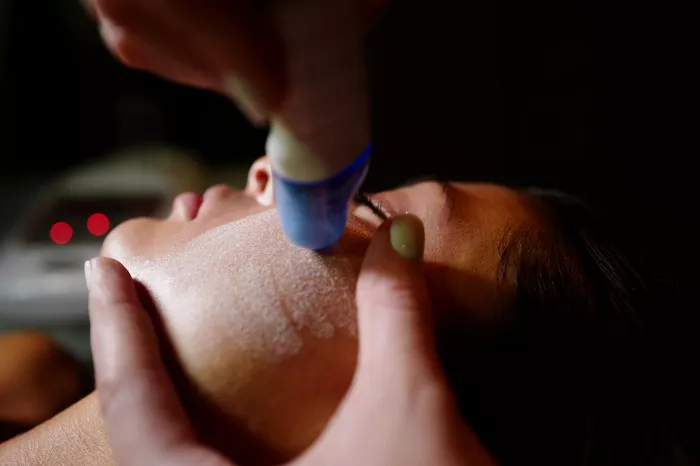Microdermabrasion has become a popular skincare treatment for improving the appearance and texture of the skin. It is a non-invasive procedure that exfoliates and rejuvenates the skin by removing dead skin cells and stimulating collagen production. Many people wonder how often they can undergo microdermabrasion to achieve the best results without causing harm to their skin. In this article, we will explore the recommended frequency of microdermabrasion treatments and factors to consider for optimal skin health.
Understanding Microdermabrasion
Before diving into the frequency of microdermabrasion treatments, let’s first understand how this procedure works. Microdermabrasion involves using a handheld device to spray tiny crystals onto the skin’s surface, which are then vacuumed away along with the exfoliated skin cells. This process helps to unclog pores, improve skin tone and texture, reduce the appearance of fine lines and wrinkles, and promote overall skin rejuvenation.
Frequency of Microdermabrasion Treatments
The recommended frequency of microdermabrasion treatments can vary depending on individual skin type, concerns, and the advice of a skincare professional. In general, it is recommended to space out microdermabrasion sessions to allow the skin enough time to recover and regenerate between treatments.
For individuals with healthy skin and minor skin concerns, such as mild acne, uneven skin tone, or superficial wrinkles, a series of microdermabrasion treatments can be done every two to four weeks. This timeframe allows the skin to heal and regenerate, ensuring optimal results from each session. It is important to note that the effects of microdermabrasion are cumulative, meaning that the skin’s condition will improve over time with regular treatments.
However, for those with more severe skin issues or sensitive skin, it is advisable to consult with a dermatologist or skincare professional to determine the appropriate frequency and intensity of microdermabrasion treatments. They will assess your skin’s condition, take into account any underlying skin conditions or sensitivities, and recommend a personalized treatment plan.
Factors to Consider
While the recommended timeframe between microdermabrasion treatments is generally two to four weeks, there are certain factors to consider that may affect the frequency of treatments.
Skin Sensitivity: Individuals with sensitive skin may need longer intervals between microdermabrasion sessions to allow their skin to fully recover. Sensitive skin tends to be more prone to redness, irritation, and dryness, so it is important to give it ample time to heal before undergoing another treatment.
Treatment Intensity: The intensity of the microdermabrasion treatment can also impact the recommended frequency. There are different levels of intensity, ranging from mild to more aggressive treatments. Aggressive treatments may require longer intervals between sessions to avoid over-exfoliating and potentially damaging the skin.
Skin Concerns: The specific skin concerns being addressed can influence the frequency of microdermabrasion treatments. For instance, individuals with deep acne scars or significant sun damage may benefit from more frequent treatments initially, followed by maintenance sessions at longer intervals.
Skincare Routine: It is essential to consider your overall skincare routine when determining the frequency of microdermabrasion treatments. It is generally recommended to avoid other exfoliating treatments, such as chemical peels or harsh scrubs, for a few days before and after microdermabrasion to prevent over-exfoliation and sensitivity.
Post-Treatment Care
After each microdermabrasion session, it is crucial to follow proper post-treatment care to enhance the results and promote skin healing. Here are some tips to keep in mind:
Moisturize: Apply a gentle, hydrating moisturizer to soothe and nourish the skin. Opt for products that are free from harsh ingredients, fragrances, and excessive chemicals.
Sun Protection: Protect your skin from harmful UV rays by wearing sunscreen with a high SPF. Microdermabrasion can make the skin more sensitive to the sun, so it is crucial to shield it to prevent sunburn and further damage.
Avoid Irritants: Refrain from using harsh skincare products or engaging in activities that may irritate the skin, such as excessive sweating or swimming in chlorinated water, for a few days post-treatment.
Hydrate: Drink plenty of water to keep your skin hydrated from within. Proper hydration helps maintain skin elasticity and overall skin health.
Conclusion
Microdermabrasion can be an effective treatment to improve the appearance and texture of your skin. The recommended frequency of microdermabrasion treatments varies depending on factors such as skin type, sensitivity, treatment intensity, and specific skin concerns. Consulting with a skincare professional or dermatologist is advisable to determine the ideal frequency for your unique needs. Remember to follow proper post-treatment care and maintain a healthy skincare routine to maximize the benefits of microdermabrasion and achieve radiant, rejuvenated skin.

